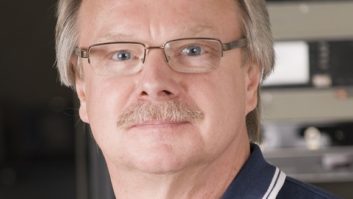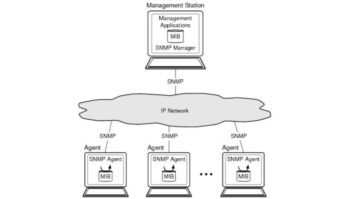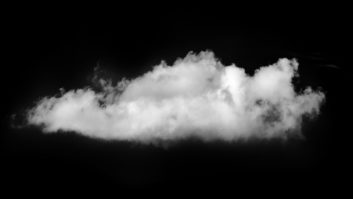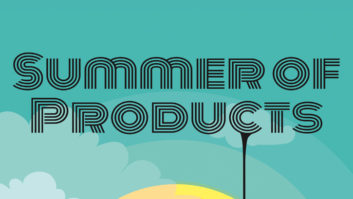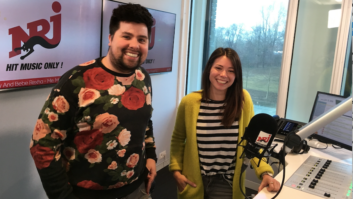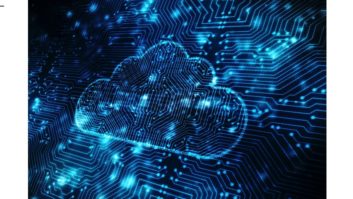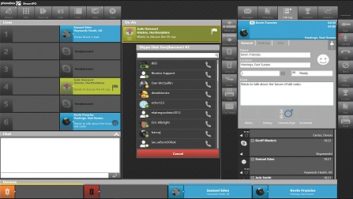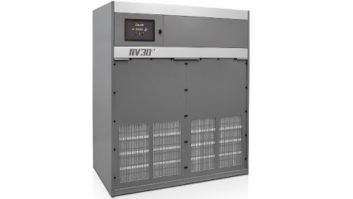The 139th International AES Convention is upon us, Oct. 29–Nov. 1, at its East Coast home, the Jacob Javits Center in New York.
The show’s audio scope easily can fill the time of any visiting broadcast engineer. An exhibition floor busy with equipment to ogle, fascinating and educational sessions, tutorials, workshops and tours make a trip to New York worthwhile (finding accommodations is a whole ’nother matter).
Keeping with the times, there’ll be a strong number of sessions focusing on streaming and IP delivery, notably in the Broadcast and Streaming Media track as well as a dedicated Networked Audio track.

Courtesy AESHIGHLIGHTS
Broadcast and Streaming Media track Chairman David Bialik said sessions will “discuss issues from all phases: production, transmission, reception and audience experience.” Events not to miss, he said, include the 50th anniversary of the FM Master Antenna on the Empire State Building and a session on production of “The Prairie Home Companion.”
Here are some highlights from the Broadcast and Streaming Media track, with details as of press time.
Thursday Oct. 29
“Streaming Audio from the Cloud,” 2:15–3:45 p.m. Former NPR Labs guru John Kean will lead a panel in looking at the whole toolbox of Internet delivery tools — streaming, podcasts, file delivery, etc.
“Loudness for Streaming,” 4–5:30 p.m. Mastering engineer Bob Katz moderates a panel that includes Kean, Thomas Lund, Scott Norcross (Dolby Labs), Rob Byers (American Public Media) and Adrian Wisbey (BBC FM Services). They’ll look at the uneven levels problem across multiple media forms and discuss the loudness war among streamers. Can the “Wild West” of streaming be tamed?
Friday Oct. 30
“Audio and IP: Are We There Yet?” 9–10:30 a.m. Steve Lampen poses big questions: What is a broadcaster and what is the medium of broadcasting? He notes that Internet distribution is trying to replace broadcast but asks whether it can complete the effort. His panel includes Tony Peterle of WorldCast Systems, David Josephson of Josephson Engineering and Kevin Gross of AVA Networks.
“Audience Measurement for Stream and Broadcast,” 10:45 a.m.–12:15 p.m. Streaming is one thing, but how does one measure the recipients of the streams? Ratings are crucial to broadcasters, but what about solid numbers for streaming? The NAB’s David Layer leads a panel to take up those vital questions.
“Audio for Adaptive Streaming — Understanding HLS-DASH, HTML5,” 3:15–4:45 p.m. Adaptive streaming? Is it important? If your operation is streaming content, then, yes, it is. Representatives from Dolby Labs, DTS, Fraunhofer, Adobe and others will be on hand to explain.
Saturday Oct. 31
“Integrating Mobile Telephony and IP in Broadcast,” 3:15–4:45 p.m. The Telos Alliance’s Kirk Harnack will examine the evolving methods of delivering audio from remote to studio.
On Friday, Oct. 30, 1:30–3 p.m., a detailed look at how “The Prairie Home Companion” is created, featuring members of its production and engineering staff.
In a similar “inside dope” vein for TV will be Ed Greene’s “Mixing for Telemedia in the 21st Century,” Oct. 30, 5–6:30. Greene, who’ll also deliver a lunchtime keynote earlier in the day, is the mixing engineer for “The Price Is Right” and other TV shows.
High on the agenda for the radio broadcast engineer should be the tour of WNYC, the public radio broadcaster, Oct. 30, 1–3 p.m. It is a technical tour and space is limited. Other tours of interest include Avery Fisher Hall and the Thomas Edison Museum in West Orange, N.J. Both are on Oct. 31.
Last, SBE certification exams will be held Nov. 1, 2–5 p.m.
It should be noted that, as of press time, details for many sessions were still being finalized, so checking the AES show website (www.aes.org/events/139/) is a worthwhile endeavor.

A view of the top of the Empire State Building as seen in 2008. The top of the spire is 1,454 feet above ground. The original Alford master FM antenna consists of two rings of T-shaped metal elements, visible below the base of the antenna mast.EMPIRE MASTER FM
A special Oct. 29 session at the Empire State Building celebrates the 50th anniversary of the installation of the original FM master antenna.
The invitation-only event is hosted by Bialik and co-sponsored by the Society of Broadcast Engineers. Scott Fybush, Radio World contributor and well-known “tower guy,” will moderate a panel on the topic. There will be a tour of the historic broadcast site and an anniversary cake is rumored.
Tickets are limited. Due to space limitations, reservations are required. Interested parties can sign up starting Oct. 28 at the AES Tech Tour Desk in the Javits Center.
Bialik said, “This event will bring AES to new heights as we meet on top of one the tallest broadcast facilities in the world to discuss the history, technology and the future.”
The Empire State Building FM master antenna, developed by Andrew Alford and Frank Kear, was the first of its kind, allowing for the use of a single mast by multiple stations via proper arrangement of smaller antennas. That made it ideal for multi-user transmission from facilities with limited space, such as the top of buildings. The original 1965 master antenna is still installed at Empire and serves as a backup.
Though this event celebrates the master antenna, Empire’s history with radio and TV goes farther back. An NBC show aired on Christmas Eve 1930, even before the building was finished. On Empire’s opening night in 1931, NBC broadcast an RKO program from the 86th floor, according to the building’s website. Regular television broadcasts date to 1939; and in July 1950, New York Mayor William O’Dwyer, RCA Chairman David Sarnoff and others drove the first rivets into the base of the broadcast tower.
Looking beyond the broadcast and streaming tracks …
ALL ABOUT AES67
For those wanting to earn their AES67 spurs, the Networked Audio track is the place to be. It’ll offer numerous sessions, but the gold mine will be Saturday, Oct. 31 when three sessions are available.
“Benefits of AES67 to the End User” starts off the afternoon, 1:30–2:30 p.m. That will be followed by “How to Get AES67 into Your Systems/Products” at 3:15–4:45 p.m. For that session Andreas Hildebrand of ALC NetworX will lead a group of manufacturing reps on what can be done with AES67. While not wholly germane for the radio broadcast engineer, it will offer a glimpse into what’s coming down the pike.
Ending the day, 5–6:30 p.m., is “How Will AES67 Affect the Industry.” Sunday offers a continuation of the theme with “AES67 Interoperability Testing,” another equipment-oriented session and one that promises to have some practical use for the radio broadcast engineer. It will reference the October 2014 Plugfest in Munich and outline the upcoming November Plugfest at NPR. Kevin Gross of AVA Networks will chair; panelists include Andreas Hildebrand and Greg Shay of The Telos Alliance.
FUN WITH RECORDING
It’s a dirty AES show secret that the Recording and Mastering track often has the sexiest sessions. Check these out.
Hang out with Grammy-winning producer Tony Visconti, Trident Audio legend Malcolm Toft and others for “Great British Recording Studios,” Oct. 30, 5–6:30 p.m. “Some of the most important and influential recordings of all time were created in British studios during the 1960s and 1970s — iconic places like Abbey Road, Olympic, Trident, Decca, Pye, IBC, Advision, AIR and Apple. This presentation will unravel the origins of the so-called ‘British Sound’ and celebrate the people, equipment and innovative recording techniques that came out of those hallowed halls, including rare photographs, videos and musical examples.”
If you want to rub shoulders with more celebrity engineers and producers, Val Garay will be at the show for “In Conversation With Val Garay — A Master Class,” Oct. 31, 11:30 a.m.–1 p.m. “In this Master Class, Mr. Garay takes you behind the console for an in-depth look at making hit recordings and working with top-name artists, while discussing his revolutionary recording techniques in detail. Some of the classic recordings to be presented include ‘Bette Davis Eyes,’ for which Mr. Garay won the Record of The Year Grammy as a producer/engineer, Linda Ronstadt’s ‘You’re No Good,’ and tracks from James Taylor’s acclaimed ‘JT’ album.”
Or just bathe in the celebrity vibe with “Raw Tracks 2.0 — Anatomy of: On-Set Recording ‘Nashville’ — Keeping It Real,” Oct. 31, 3:45–5:15 p.m. This covers the behind-the-scenes techniques used by the TV show’s sound crew to make live music a part of the show’s drama.
IF YOU GO

What: 139th Annual AES Convention
Where: Jacob Javits Center, New York
When: Oct. 29–Nov. 1
How: www.aes.org/events/139/
How Much: Advance all-access registration is $550 for non-members until Oct. 15; member discounts and various registration options are available including one-day passes and exhibits-only
AUDIO GEEKS STEP FORWARD!
The AES show also has fascinating tutorials and workshops for the dedicated audio pro.
“Evolution of Electronic Instruments,” Oct. 29, 9–10 a.m. From Les Paul’s “Log” to today’s electronic audio chameleons, what’s next on the electronic instrument front?
“Help, I Have a Tape Machine! (Redux),” Oct. 30, 2–3 p.m. For the true keeper of the analog flame, join several tape machine connoisseurs and users in this tape machine lovefest.
“Educating Your Clients on the Vinyl Process,” Oct. 30, 3:15–4:15 p.m. Vinyl is hot! Wanna be a real live, old-fashioned record mogul?
“Recording the Modern Big Band,” Oct. 31, 9–10:30 a.m. Join Al Schmitt, Leslie Ann Jones and others on this discussion about matching modern recording technology with live retro music.
“Saul Walker — The Rocket Scientist in the Recording Studio,” Oct. 31, 12:30–2 p.m. Besides being the mind behind some of API’s best studio equipment, Saul Walker has also worked on spectrum analyzers for the U.S. Navy and NASA.
“Righting a Wrong — Distortion, from Recording Accident to Rock and Roll Requirement,” Nov. 1, 9–10:30 a.m. It’s the enemy of recording except when it’s the friend of recording. What to do with distortion? tortion?
